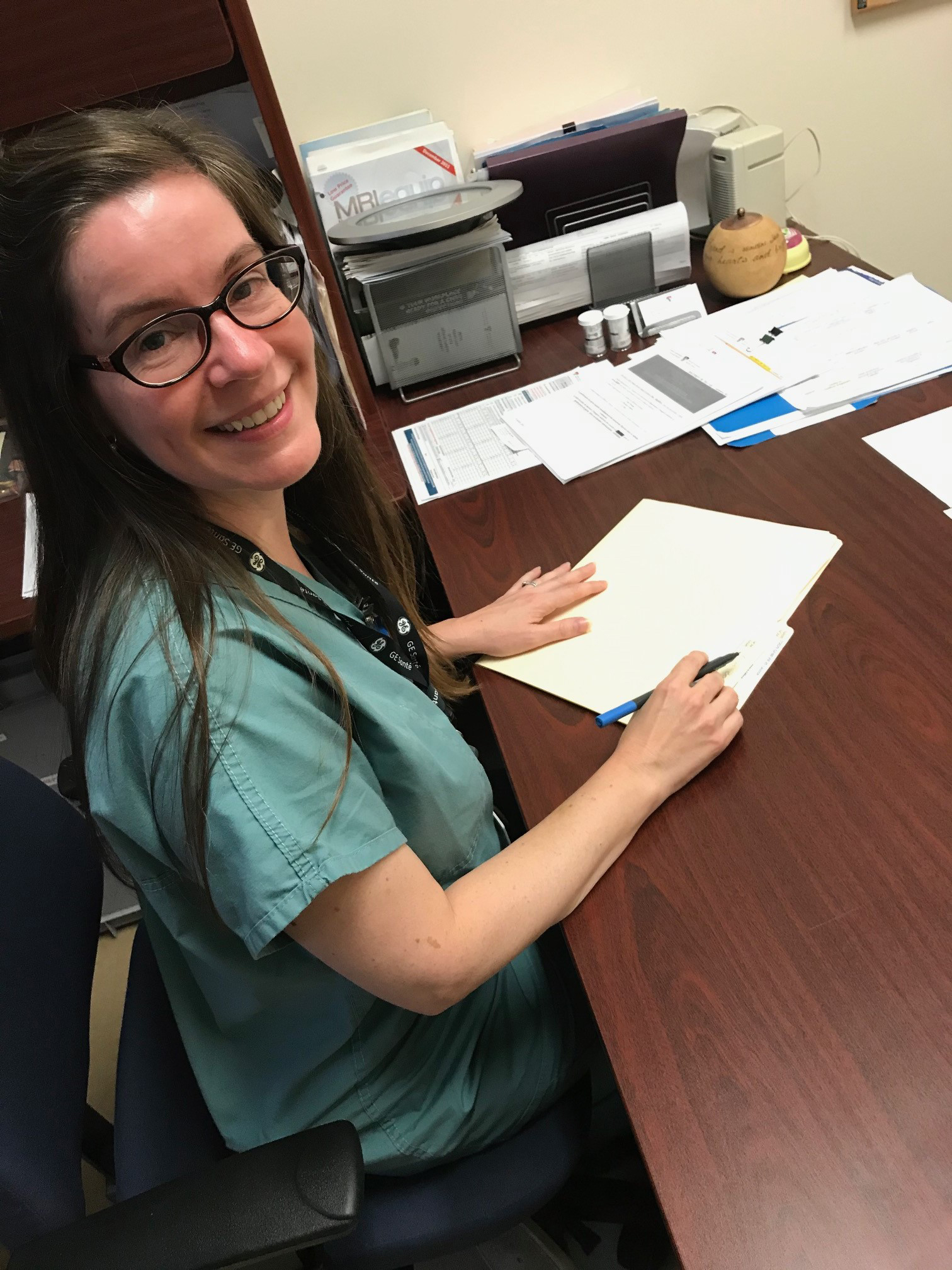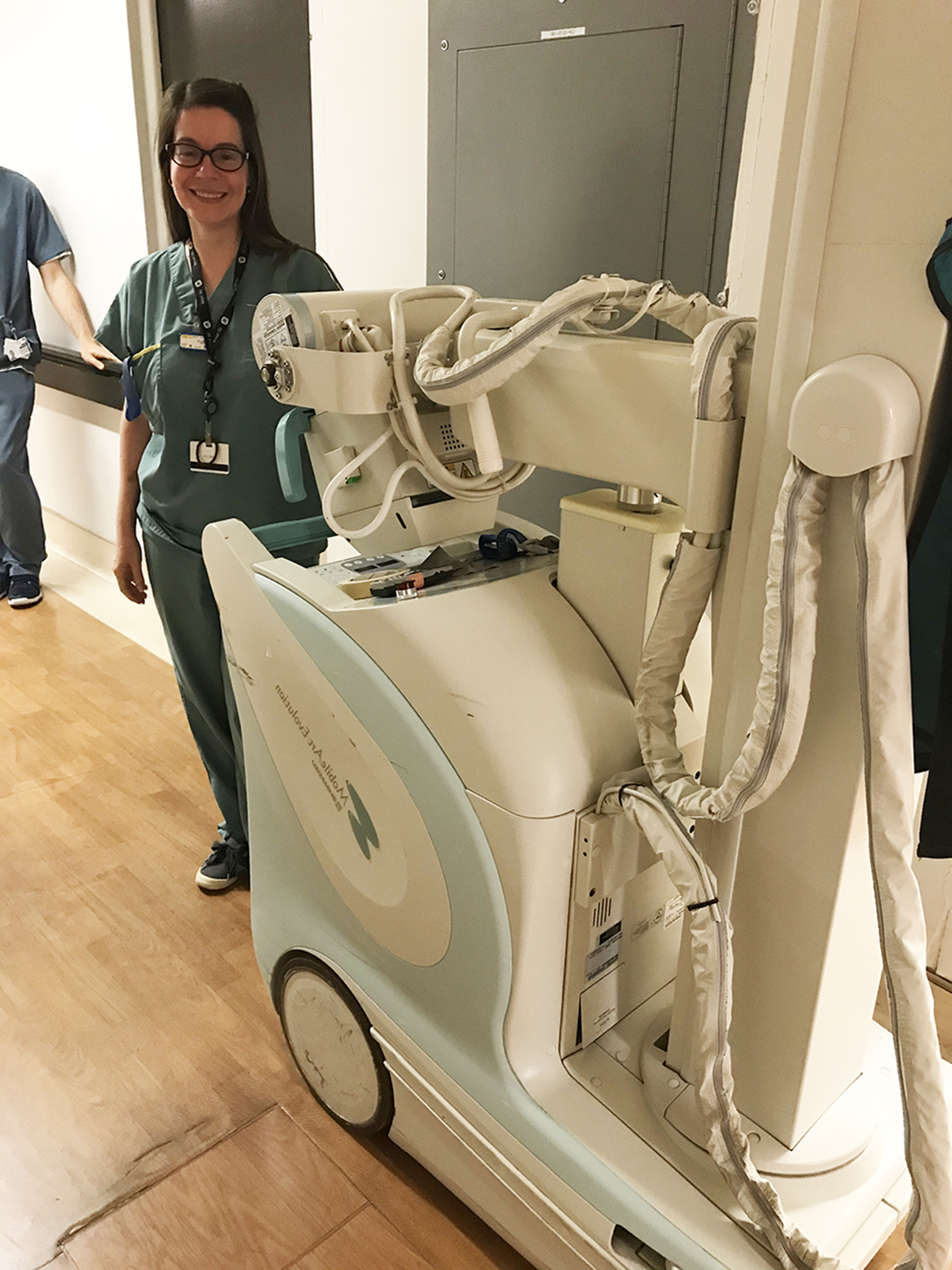Thumbs up to the technologists
Technologists use their expertise to deliver quality care to patients.
“Yes, we can get quite busy – this is a trauma centre and we can be active any time of day or night,” says Melanie Nash, technologist at the Montreal General Hospital of the McGill University Health Centre (MGH-MUHC). “While on call last night, a young man was brought in. He had multiple fractures in his leg and hip after what looked like a car accident. And I knew exactly what to do.”
Melanie, who has been working at the MGH since 2011, talks passionately about the team work she witnesses in the operating room.
“We deal with all kinds of cases, in all kinds of situations - but always with the same spirit of collaboration. As a technologist, I enjoy the close collaboration with the radiologists and doctors in the OR, the collaboration goes deep, and so does also the respect between each other.”
“Last night, I was operating the X-ray machine. With the images, the surgeon was able to align the bones in order to reduce the fracture of the leg and hip,” Melanie says, proudly.

“The images are also used when the fragments are secured with wires, and when plates and femoral rods are fixed into place. I do feel a sense of playing my part for the well-being of the patient; when the operation is over and the patient is resting, I like to check up on him and witness his recovery for the time he is with us.”
Chief of Operations of Medical Imaging (adult sites), Maria Iannantuono is congratulatory of all the Medical Imaging, radio-oncology and electrophysiology technologists (MRTs) across the 5 sites of the MUHC.

“Our technologists play in integral part of giving care to our patients. They use their expertise in the different imaging modalities to help the radiologist provide a diagnosis or a treatment to patients whether it be radiology, computed tomography (CT), magnetic resonance (MR), ultrasound, angiography, mammography or obstetrical ultrasound. They work in other departments as well such as the Cardiology Cath lab, the EP lab, the Vascular lab and in Nuclear medicine. And they also treat cancer using high energy ionizing radiation (radiotherapy and brachytherapy).”
“Knowledge of radiation therapy equipment is not enough,” says Lise Joly, manager of Radio-oncology. “Technologists must combine it with an extensive understanding of the principles of anatomy, physiology and pathology, image acquisition, treatment and radiation protection to deliver quality care to their patients.”
Whatever they do, these highly skilled professionals offer patient and family-centred care, collaborate closely with other healthcare professionals, are committed to education and lifelong learning.
“I would like to thank all our MRTs and our support staff as well. Without our administrative technicians, clerical staff, radiology assistants and nurses we would not be the Medical Imaging Department.”
